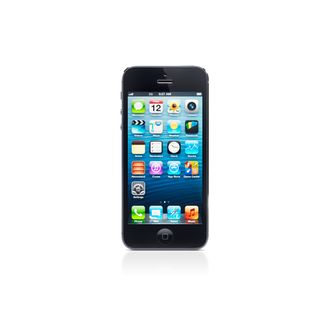
Today’s Wall Street Journal has an interesting story about the variable pricing strategies of smartphone-app-makers. The basic gist is that app-makers are now hiring pricing consultants and using reams of data to change their prices for each version of their apps, based on indicators of how much users of different platforms are likely to pay. The upshot is that prices fluctuate roughly according to user behavior and price sensitivity — the iPhone user pays $3.18 for the average paid iPhone app, whereas the average paid app in Google’s app store costs $3.06. Apps for Nokia, Windows Phone, and other also-rans are even cheaper.
I read the Journal’s story as a very bad sign for Apple, and an even worse sign for iPhone and iPad users. Their devices — already among the most expensive ones in their categories — are about to get a lot more expensive.
Variable pricing isn’t new — you’ve experienced it if you’ve ever booked a last-minute flight or a hotel room — but as the tools to do complex customer data analysis become cheaper and more accessible, the practice is working its way into every corner of the consumer economy. The WSJ, in particular, has been all over the variable pricing beat, revealing last year that Staples and a host of online retailers are now in the business of analyzing the likely spending patterns of individual customers and charging them accordingly. (Orbitz, which was also investigated by the WSJ, does a similar thing by showing more expensive hotels to Mac users higher in search results, although they don’t actually charge more for a given hotel.) And since Apple users tend to earn and spend more than their Windows and Android-based counterparts, they get the rawest deals — the ream of paper that costs you $6 to buy on a Droid tablet might cost you $7 on an iPad.
In the short term, Apple should like this trend. It takes a 30 percent cut of every app sold in its store — and since developers are experimenting with upping their prices on Apple devices, they’ll see more revenue from commissions.
The danger, though, is that variable pricing will mean that the overall cost of owning an iPhone or an iPad will skyrocket and send customers fleeing to cheaper alternatives. Say, conservatively, that you put twenty paid apps on your iPhone, and you buy ten new paid apps a year, as well as making ten yearly in-app purchases (game levels, premium features, and the like). If each of those things costs $1 more on an iPhone than an Android, your one-year ownership premium for an iPhone — excluding the phone itself — is $40. If you have your phone for four years, you’ll end up paying a total of $100 more over the lifetime of your phone for the exact same apps, in addition to the premium you’ll pay on the hardware itself.
Apple is already in danger of becoming the rich man’s tech company. Samsung and other gadget-makers have been cutting into Apple’s U.S. market share, and in Europe and Latin America, where iPhones are priced higher than in the U.S., there is even more room for cheaper alternatives to crowd Apple out. And while Apple can control the prices of its phones, it can’t easily control how much its developers charge for the apps that run on them. App-price inflation could mean that even if Apple did introduce a cheaper iPhone to go after some of the low-end market, the overall cost of owning an Apple device could remain prohibitively high for some people.
The possible saving grace for Apple is that the app market is fairly opaque. Unless you have both an iPhone and an Android device, or are willing to survey users of different devices or conduct online research, there’s no easy way to figure out how much more you’re being asked to pay for a given app. It’s the same reason Staples’ price-differentiation schemes went unnoticed until the Journal started poking around.
But Staples customers were upset at that, and iPhone customers will be, too, if it becomes widely known that they’re paying more than their Android and Windows Phone counterparts for the same apps. Apple could then be forced to issue pricing rules to developers, requiring them to obey a one-price policy or get kicked out of the app store. Until that happens, though, Appleheads should expect to keep paying more for the same thing.





























